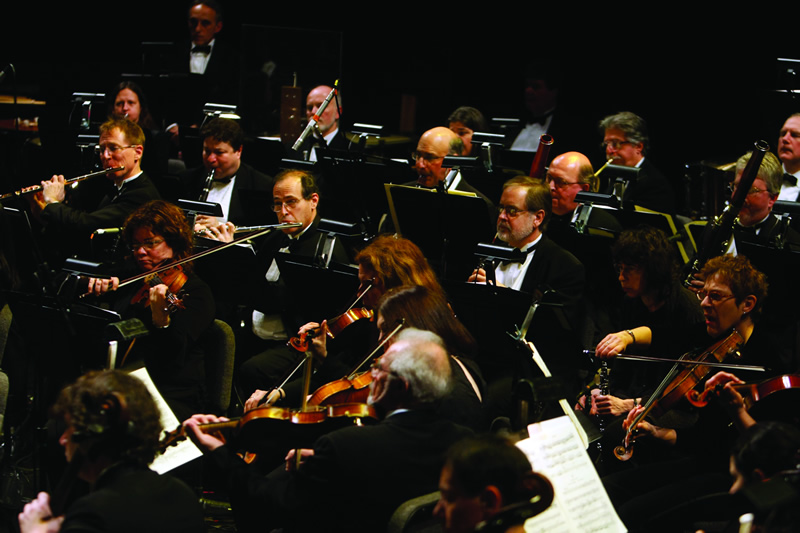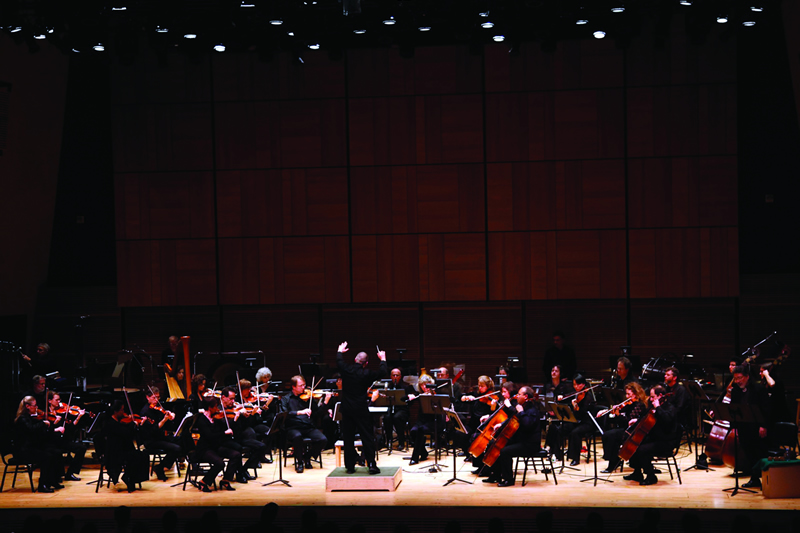Allegro
Tackling the tough issues
Volume 112, No. 5May, 2012
  This has been a very difficult year for the freelance classical negotiations, but there have been some bright spots. The Brooklyn Philharmonic Orchestra (top) revived itself and offered above-scale wages to musicians. The American Composers Orchestra (above) signed an agreement that pays slightly higher rates than the Stamford Symphony, which was the first orchestra to settle with. us. |
Classical music, the Great Recession and Local 802’s freelance negotiations
It’s been a few months since we’ve updated our members about the negotiations in the freelance classical field. We can now report some news. But first, I’d like to explain some history and background. This will put everything into context and help musicians understand where we are today.
First, for new members of Local 802, a quick definition. When we speak of “freelance” classical ensembles, we mean pretty much every classical ensemble in New York City except the New York Philharmonic and the Met Opera, where musicians are on salary. If musicians are paid by the gig, we call it a freelance ensemble.
Many years ago – 1986 to be exact – the freelance concert negotiations took a turn that has reverberated through the several succeeding decades.
At that time, all of the major freelance orchestra management negotiated as a single entity, the so-called OMNY group.
Local 802’s premise was that a city-wide, across-the-board union scale was our best option. Basically, a single union scale would prevent undercutting. If an outside presenter wanted to hire a New York City orchestra for a project, we didn’t want the various ensembles bidding against each other for the job, which would lower wages for everyone. A single union scale that everyone abided by would avoid this.
For Local 802 musicians in 1986, the real issues were fair and appropriate compensation, scheduling, and a level playing field.
Unfortunately at that time, OMNY management could not agree on fair compensation and work rules that might apply to all musicians. The proposals that management did come up with were unacceptable. And so we went on strike!
We marched everywhere. We marched at Avery Fisher Hall, protesting a performance by the Musica Sacra chorus that went ahead without an orchestra. Brooklyn Philharmonic musicians refused to get on a tour bus. Musicians at the Long Island Philharmonic struck a performance by famed soprano Kiri Te Kanawa at CW Post’s Tilles Center
I found myself as a Local 802 spokesman. One morning, I awoke to my own voice coming out of CBS 880.
It was a wild few weeks, but it was a signature moment whose echoes still affect the freelance concert world today.
It soon became apparent that the OMNY experiment was over. Management was simply not unified. The truth is that each of the freelance orchestras had unique needs that could not be adequately addressed by a single master agreement.
So from that moment on, we were faced with the prospect of negotiating separately with each orchestra. This resulted a unique collective bargaining agreement for each group. However, the pay structure would be uniform in spite of slightly differing conditions for each ensemble. We always attempted to accommodate an orchestra’s individual circumstances while simultaneously creating a clear, fair, and understandable set of local standards.
Fast forward to 2009. The Great Recession arrives. This catastrophe impacts many – if not all – of the freelance orchestras. Traditional private donors sent less or even no money to arts organizations, and diverted their available discretionary monies to health care, education, and other endeavors.
Those ensembles that traditionally relied on money from the New York State Legislature or the New York State Council of the Arts saw those funds delayed for months or years, if not disappear completely. These were the deplorable but indisputable facts.
Nearly all of the freelance contracts expired in September 2010. Musicians deemed that most of their ensembles were facing real financial need and decided that the best course for the 2010-2011 concert season was to extend each contract until September 2011 and accept a general pay freeze for that period. Negotiations for the successor agreements commenced in spring 2011, about one year ago.
The negotiations were difficult and protracted. Also, the traditional lead player in the freelance concert negotiations – the New York Pops – seemed reluctant to lead the way this time.
Surprisingly enough, the first orchestra to settle was the Stamford Symphony, not one of the original OMNY orchestras, but a substantive orchestra filled with many of New York’s finest musicians.
After months of talks, leafleting, and nearly a job action, Stamford settled its contract in April 2011. The contract would run from Sept. 1, 2010 through Aug. 31, 2014, with yearly increases of approximately 1.5 percent to 2 percent per year.
Next to settle was the American Composers Orchestra in September 2011, at compensation rates slightly higher than the Stamford Symphony and with a similar term.
The Little Orchestra Society and the New York Pops have only recently settled along those lines, and the Queens Symphony will likely do so as well.
However, the playing field is not quite level. The American Symphony started its negotiations earlier than most, but began by proposing a radical change of its pay and service structure, essentially attempting to create a year-long biweekly payment schedule.
After nearly a year of negotiation, both management and the ASO orchestra committee agreed to abandon the attempt. The ASO agreement runs until September 2013 and, in deference to its relatively high volume of work both in New York and at Bard College, musicians agreed to a continued pay freeze for that period. ASO will, however, compete on an equal footing with other local orchestras when seeking third party presenters.
The Opera Orchestra of New York, citing financial duress, extended its agreement only until September 2012, also at a pay freeze, then cancelled its next and final engagements for the 2011-12 season.
The Long Island Philharmonic and the Westchester Philharmonic also face extreme financial stresses.
One very pleasant development has been the revival of the Brooklyn Philharmonic. After several years of a severely curtailed schedule, BPO has started performing more widely. While not yet presenting the number of concerts of a decade ago, there is at least a heartening sign of life. Interestingly enough, BPO proposed compensation rates slightly higher than what has emerged as the standard concert scales. That agreement was ratified by the Brooklyn musicians in early April.
One final note. I am constantly amazed at the hard work and fortitude of all the orchestra committees in a difficult negotiating environment. Bravo to all. We all owe them our thanks.
